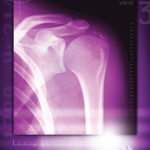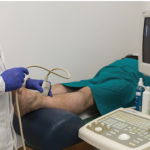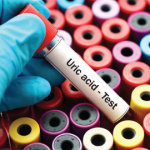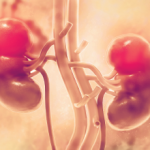Duzallo, a combination of lesinurad and allopurinol, was approved by the FDA in August to treat hyperuricemia associated with gout…


Duzallo, a combination of lesinurad and allopurinol, was approved by the FDA in August to treat hyperuricemia associated with gout…

MADRID—Calcification in osteoarthritis (OA) involves a series of pathways and interactions that feed off each other in a process that bears some resemblance to the transformation of cartilage to bone that takes place in the embryonic stage of human development, a researcher said here at the 2017 Annual European Congress on Rheumatology (EULAR). “My hypothesis…
Reuters Staff |
(Reuters)—Ironwood Pharmaceuticals Inc. said on Monday the U.S. Food and Drug Administration (FDA) approved its oral drug to treat a condition associated with gout. The company’s once-daily drug, Duzallo (lesinurad and allopurinol), was approved to treat hyperuricemia in patients with gout, Ironwood said. Duzallo combines the standard-of-care treatment, allopurinol, with Ironwood’s lesinurad to treat inefficient…
A 66-year-old female patient returns to the office complaining of swelling and a burning pain in her right first toe. She rates the pain level at a 9 out of 10. She currently takes an over-the-counter non-steroidal anti-inflammatory drug (NSAID), but it has done little to alleviate the pain. This is her second episode this…
Take the challenge. CPT: 99214-25, 89060, 20600-RT ICD-10: M10.271, T50.2X5A, I10 This is an established outpatient visit. This encounter is coded as 99213, because it included: History—Detailed: The history of present illness is extended, the review of systems is extended, and the past medical and social histories are documented. Examination—Detailed: Seven organ systems are examined….

The presence of synovial monosodium urate monohydrate (MSU) crystals is the gold standard for diagnosing gout. But a new study, funded in part by the ACR and led by rheumatologists, including Alexis Ogdie, MD, MSCE, evaluated the effectiveness of ultrasound in diagnosing it. The study found that ultrasound can be useful in discriminating gout from non-gout….

Gout patients need to lower their uric acid levels to 6.0 mg/dL or below and maintain that level. According to N. Lawrence Edwards, MD, MACP, MACR, an education campaign has been raising awareness of this fact and helping gout patients…

Sneha Patel, MD, Monica Mohile, MD, & Arundathi Jayatilleke, MD |
A 56-year-old African American man presents to the emergency department with polyarthralgias and a fever of 103ºF. One month prior to admission, he presented with right knee pain and swelling. Blood cultures grew S. epidermidis. He was treated for presumed septic arthritis complicated by MSSE bacteremia. He was treated with meropenem and a prolonged course…

WASHINGTON, D.C.—Taking high-dose non-steroidal anti-inflammatory drugs (NSAIDs) with a TNF inhibitor as an ankylosing spondylitis (AS) patient is linked with a 61% decrease in the chances your disease will progress, suggesting there may be a synergy when the drugs are used together, according to a longitudinal observational study from researchers at the University of California,…

WASHINGTON, D.C.—Despite the value of guidelines, they often “are not read,” said N. Lawrence Edwards, MD, professor of medicine specializing in rheumatology at the University of Florida, at the 2016 ACR/ARHP Annual Meeting talk titled, New & Emerging Therapies for Gout, as part of the ACR Review Course. Or if they are read, they aren’t…